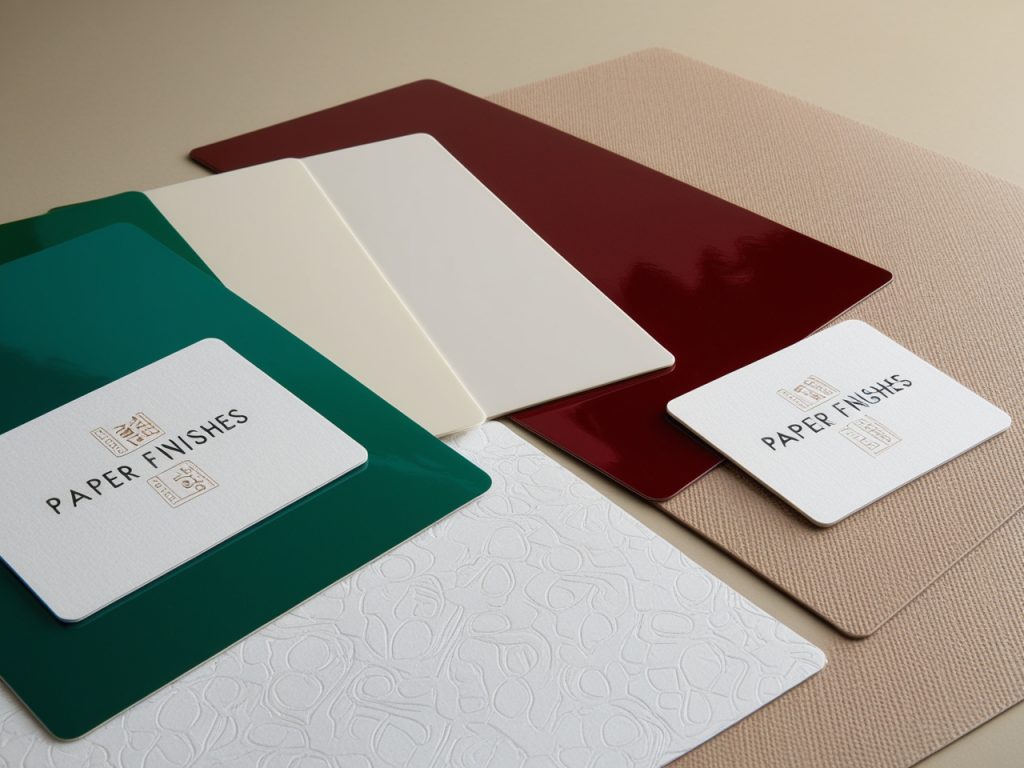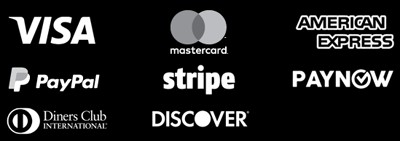Paper Types for Printing #

1. Gloss Paper #
Gloss paper has a shiny, reflective finish that enhances the vibrancy and depth of colors in your printed materials. This paper type is ideal for projects that require bright, eye-catching visuals and sharp details, such as photographs, brochures, and promotional materials.
- Best For: Brochures, flyers, business cards, posters, catalogs, and photo prints.
- Pros:
- Enhances color vibrancy and makes images stand out.
- Provides a professional, polished look.
- Smooth surface makes text and images appear sharper.
- Cons:
- Highly reflective, which can create glare under certain lighting conditions.
- Fingerprints and smudges may be more noticeable on gloss surfaces.
2. Matte Paper #
Matte paper offers a non-reflective, smooth finish that gives your printed materials a more subtle and sophisticated appearance. The muted finish of matte paper reduces glare and allows for easy readability, making it a great choice for text-heavy documents, invitations, and professional presentations.
- Best For: Business cards, letterheads, postcards, posters, booklets, and reports.
- Pros:
- Reduces glare, making it easier to read in bright light.
- Provides a professional, understated look.
- Text appears crisper and cleaner on matte surfaces.
- More resistant to fingerprints and smudges than gloss paper.
- Cons:
- Colors may appear less vibrant compared to gloss finishes.
- May not be ideal for projects with high-impact visuals.
3. Textured Paper #
Textured paper adds depth and a tactile element to your printed materials, offering a unique look and feel. Common types of textured paper include linen, felt, and laid finishes. These textures are often used for projects where a more luxurious, handcrafted feel is desired, such as invitations, greeting cards, and business stationery.
- Best For: Wedding invitations, luxury business cards, greeting cards, certificates, and letterheads.
- Pros:
- Adds a premium, sophisticated feel to your print materials.
- Offers a tactile experience that enhances the user’s interaction with the material.
- Available in a variety of textures and finishes to match different aesthetic preferences.
- Cons:
- Text and images may not print as crisply on heavily textured surfaces.
- May be more expensive compared to standard paper options.
4. Silk Paper #
Silk paper combines the best of both matte and gloss paper. It has a smooth surface like matte paper but with a slight sheen, giving it a more luxurious feel without the high level of reflectivity seen in gloss paper. This makes silk paper ideal for printing materials where a premium finish is desired but without the full gloss effect.
- Best For: Magazines, brochures, high-end business cards, and premium marketing materials.
- Pros:
- Offers a balance between gloss and matte finishes, providing a subtle sheen.
- Feels smooth to the touch and enhances the appearance of images and text.
- More resistant to glare compared to full gloss paper.
- Cons:
- Not as vibrant as gloss paper for color-intensive designs.
5. Recycled Paper #
Recycled paper is made from post-consumer waste materials and is an eco-friendly option for printing projects. It’s available in various finishes, such as gloss or matte, and is ideal for businesses and individuals looking to reduce their environmental impact while maintaining high-quality printed materials.
- Best For: Eco-conscious businesses, brochures, flyers, packaging, and office stationery.
- Pros:
- Environmentally friendly and sustainable.
- Available in various weights and finishes (gloss, matte, etc.).
- Helps promote a brand’s eco-friendly image.
- Cons:
- May not be as bright or smooth as non-recycled paper.
- Some recycled papers may have a slightly rougher texture.
6. Uncoated Paper #
Uncoated paper is free from any gloss or matte coating, giving it a more natural, textured feel. This paper type is often used for printing documents where readability is key, such as books, notepads, or forms. Since uncoated paper is more absorbent, colors appear softer and less vibrant compared to coated papers.
- Best For: Books, letterheads, stationery, notebooks, and forms.
- Pros:
- Provides a natural, organic feel.
- Easy to write on, making it ideal for notepads and stationery.
- Text appears clear and legible due to the absorbent surface.
- Cons:
- Colors may appear duller and less vibrant than on coated paper.
- Prone to absorbing more ink, which can lead to a slight bleeding of colors.
7. Coated Paper (Gloss and Matte) #
Coated paper comes with either a gloss or matte finish, and it has a layer of coating applied to the surface to give it a smooth, polished look. Coated paper is commonly used for marketing materials like brochures, magazines, and business cards, as it enhances the vibrancy of printed images and protects the surface from wear and tear.
- Best For: Business cards, brochures, magazines, catalogs, and posters.
- Pros:
- Enhances the appearance of colors and details in your design.
- Protects the paper from smudges and fingerprints.
- Available in both gloss and matte finishes.
- Cons:
- More difficult to write on compared to uncoated paper.
- Slightly more expensive than uncoated options.
8. Bond Paper #
Bond paper is a high-quality, durable paper commonly used for office stationery, letterheads, and legal documents. It has a smooth surface that makes it ideal for writing or printing documents that require a professional appearance.
- Best For: Office stationery, letterheads, reports, and forms.
- Pros:
- Strong and durable for everyday office use.
- Provides a clean, professional look for official documents.
- Smooth surface for easy writing and printing.
- Cons:
- Not suitable for high-color or photographic prints.
How to Choose the Right Paper for Your Project #
When selecting a paper type for your print project, consider the following factors:
- Project Type: What are you printing? For projects with a lot of visual content, like brochures or catalogs, gloss or silk paper is ideal. For more text-heavy documents, such as reports or forms, matte or uncoated paper may be better suited.
- Desired Finish: Do you want a shiny, vibrant finish or a muted, professional look? Gloss paper is best for projects that require color intensity, while matte paper offers a more understated, sophisticated finish.
- Tactile Experience: If you want your printed materials to feel unique and luxurious, textured paper can add an extra dimension of professionalism and style.
- Sustainability: If eco-friendliness is a priority, consider using recycled paper, which offers both environmental benefits and quality printing.
Choosing the right paper type is crucial for the success of your print project. Whether you need glossy, vibrant prints or smooth, professional matte finishes, understanding the various options available will help ensure your final product looks exactly how you envisioned it.
You can find free business card templates on Freepik.
Learn more about the different printing methods in this comprehensive guide.

